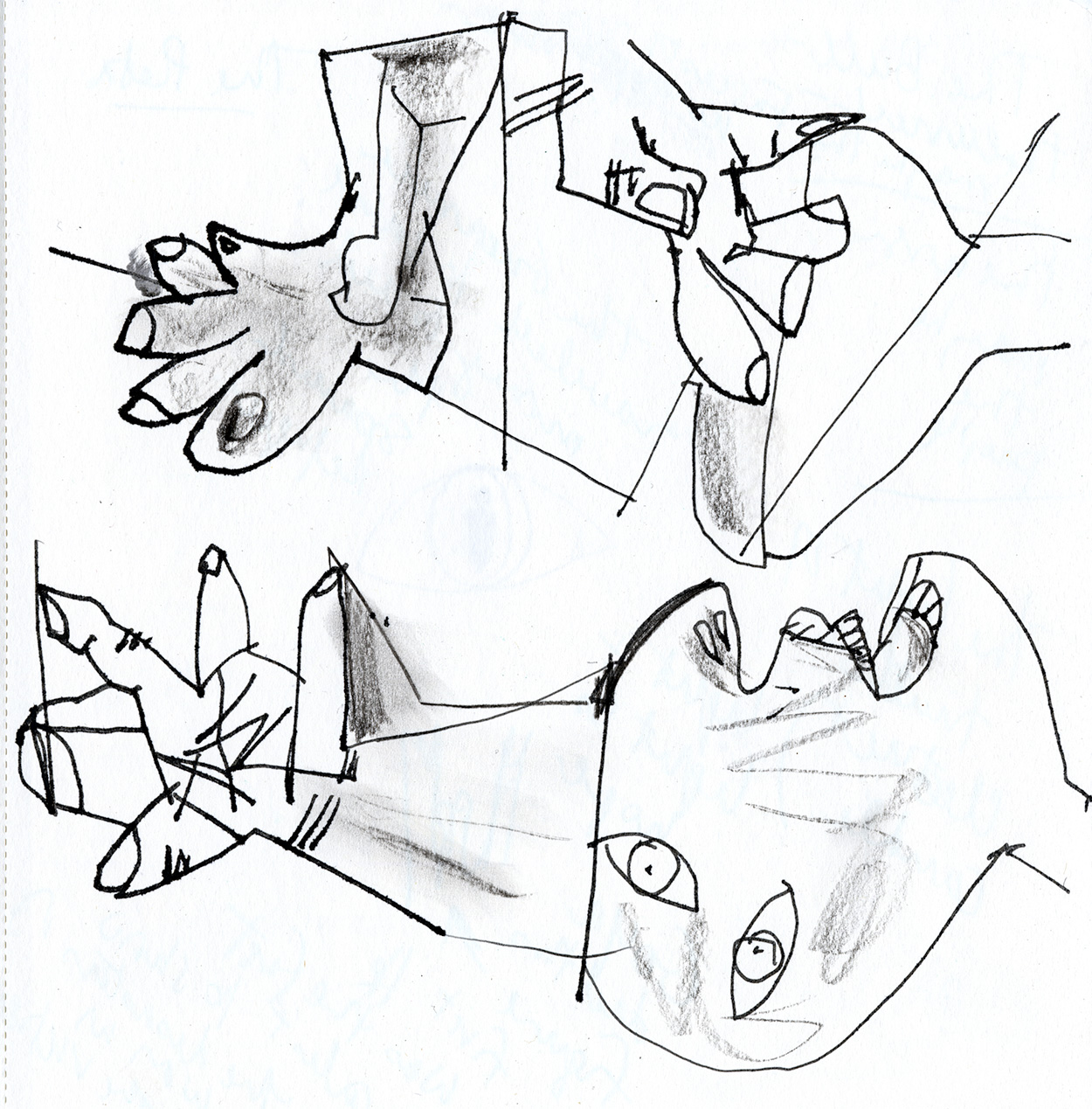I recently returned from a summer trip to Europe, where I finally saw Picasso’s famous mural, Guernica, in person for the first time: hanging in its home in the Reina Sofia museum in Madrid.
Friends and artists Margaret Hurst, Susan Buroker, and Julia Sverchuk were also there with me for their first viewings, we called our trip the Guernica Pilgrimage. As part of the pilgrimage we also popped over to Paris for a day, to see the exhibit on the Guernica studies that was on this summer at the Picasso museum.
Unbelievable. The Guernica is so worth a trip to Madrid to see in person. The mural moves, breathes, and speaks to you as you stand in front of it. Depending where you stand, you see a different painting, and the figures move in a different way. The emotion is raw, and the art feels like it was completed just a few weeks ago. The painting is so timely both in it’s design and execution as well as, unfortunately, in it’s message. I don’t normally draw from paintings, but making drawings and studies of the Guernica (like the one you see above) made the experience feel like a reportage of Picasso’s brain, and a lesson in how to synthesize the art and symbol vocabulary that has come before you. We stayed in the gallery all morning, had a beautiful Spanish lunch, and returned in the afternoon for more. Sigh.
And seeing the Parisian exhibit on Picasso’s process to arrive at the Guernica only added to the story. The exhibit traced his journey, from the initial thumbnails where he wasn’t sure what to put into the Spanish pavilion, to the newspaper stories of Guernica that electrified him and gave him his sense of purpose, to the many studies of classic paintings at the Prado (which I saw some of as well) and themes from his own artistic vocabulary that he put to use, to tell the story. Picasso wanted the mural to become not only a documentation of the tragedy of the bombing of Guernica, but also a powerful anti-war monument. It transcends it’s original subject matter even as it freezes the moment in time.
Picasso famously refused to allow the painting back into Spain while Franco was still in power, and it did not return to the country until the early 1980s. Now it is considered a national treasure.
If you haven’t been, GO to Madrid to see this amazing work in person. But wait until late fall – temperatures in Madrid reached 103 Fahrenheit while we were there. That’s hot. (Kind of like strolling through a pizza oven.)
I’ll be posting more on my summer trip including the Urban Sketchers Symposium in Porto, Portugal (an amazing city) and a private tour of the Plaza del Toros in Madrid with my family on my personal blog soon. Check it out HERE in a few days if you’re interested…
